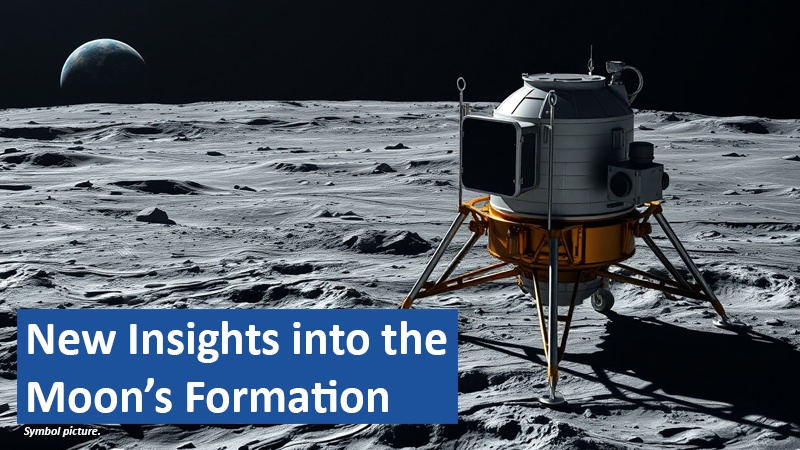
The origin of the Moon has fascinated scientists for decades. The most widely accepted theory suggests that the Moon formed after a massive collision between early Earth and a protoplanet called Theia. A new study now provides more precise insights into the timing and process of this event. The findings are based on analyses of lunar rock samples collected during the Apollo missions.
Limited-time Amazon deals – don’t miss out!
Theia Impact as the Moon’s Origin
The giant impact hypothesis proposes that Theia collided with Earth about 4.5 billion years ago. During this event, Theia’s iron core merged with Earth’s, while a massive amount of debris was ejected into space. Over time, these fragments formed a ring around Earth, eventually coalescing into the Moon. Recent measurements confirm that this process likely occurred around 4.45 billion years ago.
Evidence from Lunar Rocks
Scientists analyzed Apollo mission rock samples to refine the estimated age of the Moon’s formation. A key finding is the presence of KREEP, a mineral-rich layer in lunar rocks that formed as the Moon’s molten magma ocean cooled. By measuring the radioactive decay of lutetium into hafnium, researchers determined that the Moon’s cooling period ended 4.43 billion years ago, allowing them to infer the final formation stage of the Moon.
Implications for Future Research
These findings reinforce existing theories about solar system evolution and provide critical insights for upcoming missions, such as China’s Chang’e program and NASA’s Artemis project. These missions aim to collect more lunar samples, further refining hypotheses about the Moon’s origins. Additionally, the same research techniques could be applied to study the formation of other celestial bodies.
Expanding Our Understanding of the Early Solar System
The study of lunar rocks offers scientists a unique window into Earth’s early history. Because the Moon preserves geological records from that time, further research could provide even more precise insights into our planet’s formation. The coming years hold great potential for new discoveries about the history of the solar system.
The latest findings on the Moon’s formation provide crucial data on the early solar system’s development. With advanced measurement techniques, researchers can continue refining existing theories and pinpointing the Moon’s exact age. Future missions like Artemis and Chang’e could bring additional evidence, further deepening our understanding of the Moon’s and Earth’s evolution.
What could future lunar missions reveal about Earth’s formation? How might similar research methods help scientists study other celestial bodies? Share your thoughts in the comments.
Based on content from www.dailyheritage.com and own research.